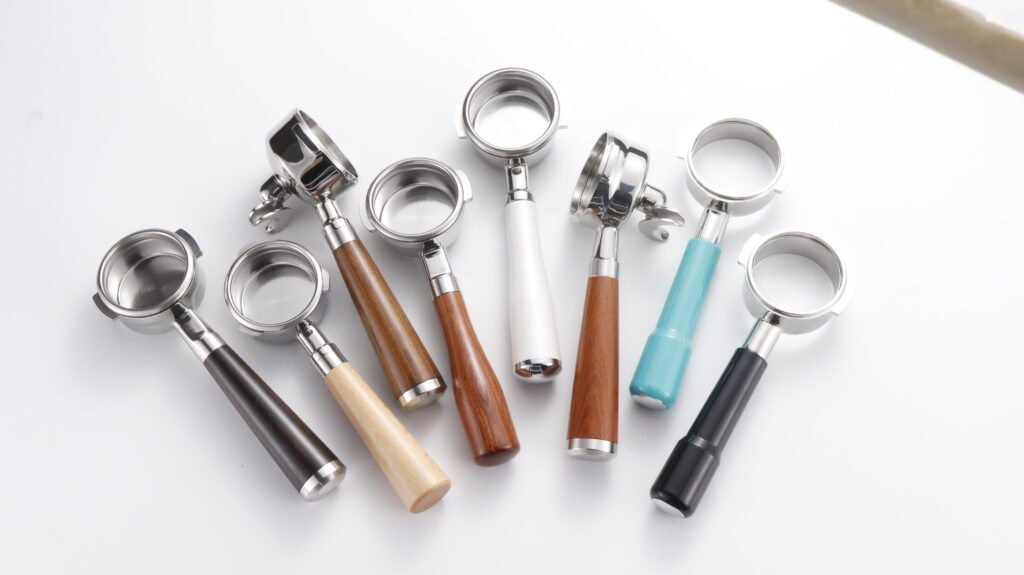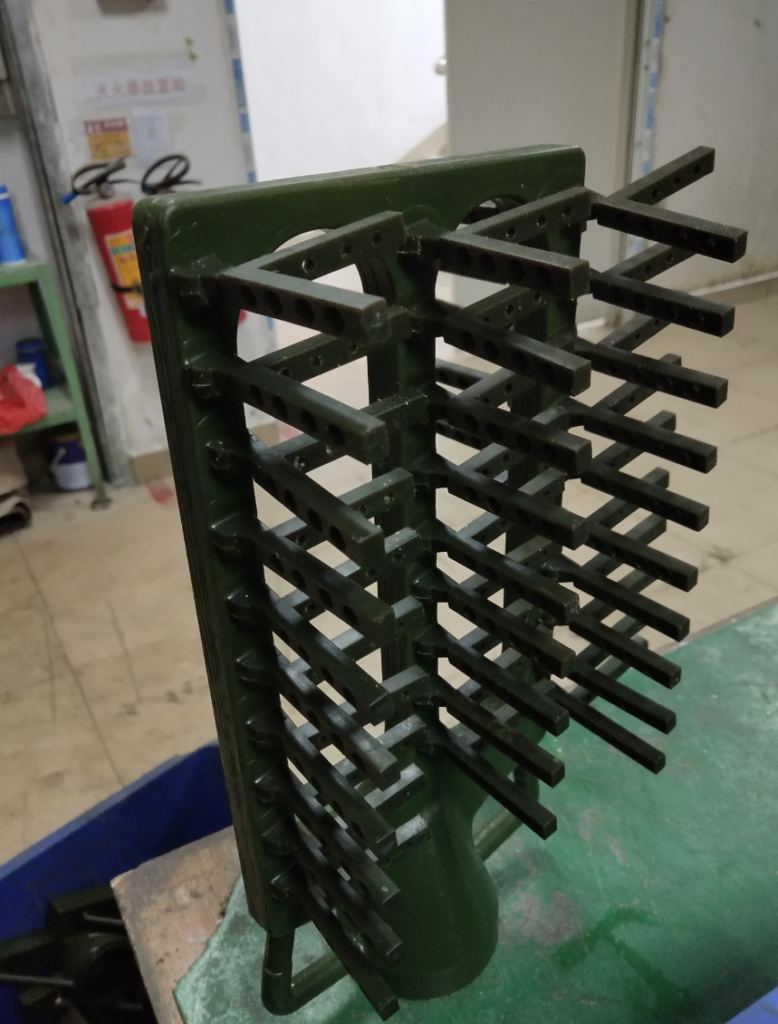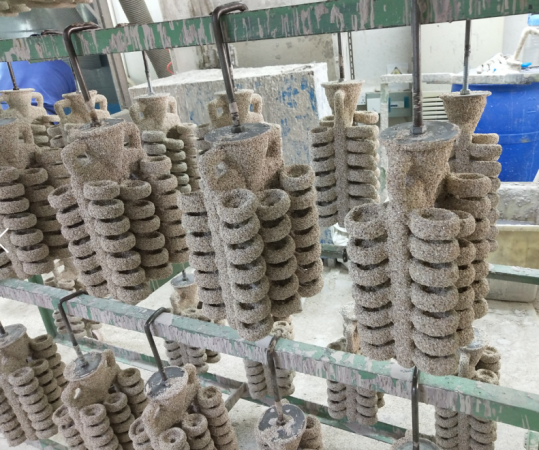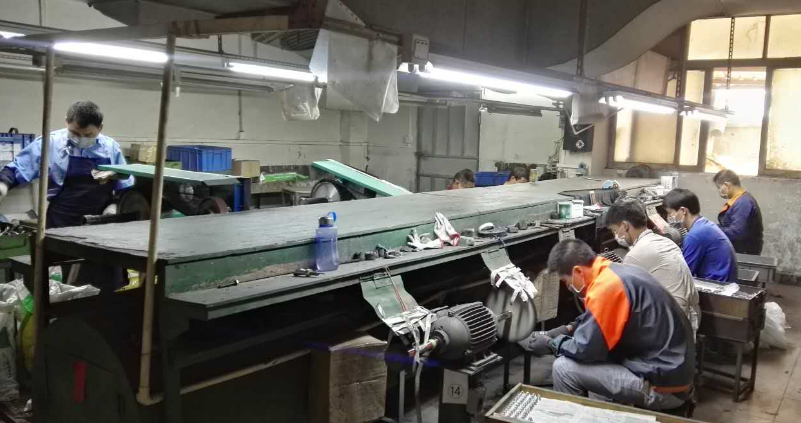Sourcing portafilters brings inconsistent quality. Your supplier's cheap price might hide a flawed process. The result? Unhappy customers and returns. This detailed guide reveals the true manufacturing journey.
A portafilter is made using a method called investment casting. The process starts with a wax model, which is coated in a ceramic shell. The wax is melted out, and molten stainless steel is poured in. Finally, the raw casting is machined and polished to perfection.

It sounds complex because it is. As a manufacturer at SIF Coffee Tools, I've seen firsthand how cutting corners at any stage can ruin the final product. Let’s walk through our factory process, so you know what separates a premium portafilter from a cheap imitation. I want to show you exactly how we do it, ensuring that every piece meets the high standards required by discerning clients like coffee equipment distributors in the UAE and Europe.
How Does It All Begin with a Simple Wax Model?
It's hard to imagine a solid steel portafilter starts as wax. This first step is the most critical for accuracy. Get it wrong, and every single part will be flawed.
The process starts with a precision mold based on your design. We inject hot wax into this mold to create an exact replica of the portafilter head. These wax models are then carefully attached to a central wax rod, forming a "tree" for efficient production.

This first stage happens in what we call the Wax Injection Workshop. It's where the blueprint becomes a physical object. The entire process hinges on the quality of the initial mold. If the mold is off by even a fraction of a millimeter, the final portafilter won't fit the machine group head correctly. This is something my client Muhammad, an equipment importer in Dubai, cannot afford. He relies on me for absolute consistency.
Here’s how we break it down:
- Creating the Master Mold: Based on a client's technical drawing, we use high-precision machinery to create a steel mold. This is a significant upfront investment but it is the only way to ensure every wax part is identical across a production run of thousands of units.
- The Injection Process: Our wax injection machines heat the wax to a specific temperature and inject it into the mold under pressure. This guarantees the wax fills every tiny detail of the mold. After a brief cooling period, the perfect wax replica is ejected.
- Assembling the Tree: We don't make them one by one. To be efficient, we take multiple wax models and "weld" them onto a central wax pole. This structure looks like a tree and allows us to create many parts in a single casting batch.
How Does Wax Turn into a Solid Steel Portafilter?
The delicate wax models now need to become strong enough to hold molten metal. This magical transformation happens in our Slurry and Furnace workshops, where precision meets extreme heat.
The wax "tree" is dipped repeatedly into a ceramic slurry and covered with fine sand, building a strong shell. Once dry, the tree goes into a furnace. The wax melts away, leaving a hollow ceramic mold. Molten stainless steel is then poured into this mold.

This is the core of the "lost-wax" or "investment casting" method. It's an ancient technique we have perfected with modern technology. The transition from a fragile wax tree to a solid metal part happens in two key workshops.
- The Slurry Workshop: Here, a robotic arm dips the wax tree into a tank of ceramic slurry. After each dip, it's coated in a layer of fine sand. This process is repeated several times, with hours of drying time in between each layer. The number of layers is critical. Too few, and the shell might crack under the pressure of the molten steel. Too many, and fine details on the portafilter can be lost. Our process ensures the shell is strong enough for the next step.
- The Furnace Workshop: The dried ceramic shell, with the wax still inside, is placed in a high-temperature furnace. The heat does two things. It melts the wax out completely, which is why it's called "lost-wax". And it cures the ceramic shell, making it extremely hard. We then pour molten, food-grade stainless steel into the now-empty, red-hot shell. Controlling the steel and shell temperature is crucial to prevent defects and ensure the metal flows into every part of the mold. This is how we ensure our products meet strict FDA, LFGB, and Reach standards.
Is the Portafilter Ready After It Cools Down?
Not even close. The raw casting looks rough and is unusable. The final, critical steps happen in our Machining and Polishing workshop, turning a rough piece of metal into a premium tool.
First, the ceramic shell is broken away. The individual portafilters are cut from the steel "tree." They then go to CNC machines for precise drilling and threading. Finally, each part is meticulously hand-polished.

This final phase is where the portafilter takes its functional and beautiful form. It requires both our advanced machinery and the skilled hands of our workers. This is where the true value is added, separating a premium OEM product from a cheap, unreliable alternative. A buyer with strong commercial acumen knows this final finishing is what allows them to command a premium price in their market.
| Process Step | Description | Importance for Quality |
|---|---|---|
| 1. Knockout & Cutting | The cooled ceramic shell is broken off using vibration or hammers. The individual raw portafilter castings are then cut from the central steel rod. | This reveals the raw metal part. It's still rough and unusable, with a nub where it was attached to the tree. |
| 2. CNC Machining | The raw casting is placed in a Computer Numerical Control (CNC) machine. We drill the hole for the handle, create the threads, and mill the locking ears. | This is non-negotiable. The dimensions of the locking ears must be exact to fit the espresso machine's group head tightly and prevent leaks. |
| 3. Manual Polishing | Our skilled workers take the machined part to polishing stations. They use a series of grinding and buffing wheels with progressively finer abrasives. | This removes all casting and machining marks. It creates the beautiful, smooth surface that customers expect from a premium product. |
This meticulous, three-step finishing process is how we guarantee that every portafilter we ship, whether for an OEM brand in Spain or a distributor in Saudi Arabia, meets the highest standards for both fit and finish.
Conclusion
From a wax model to a polished steel tool, manufacturing a portafilter is a complex process. This ensures every piece is precise, durable, and ready for demanding professional use.




